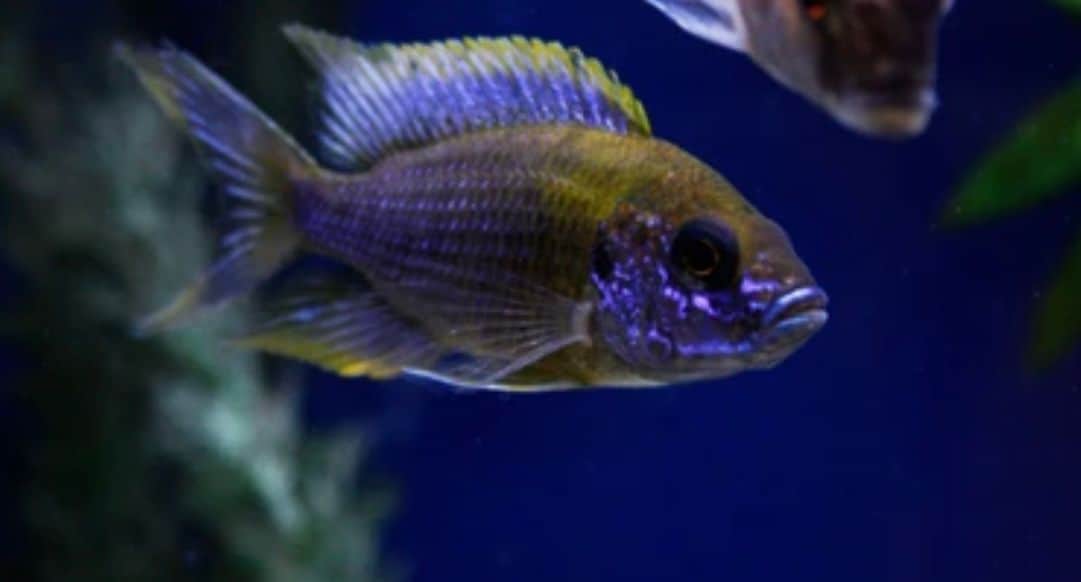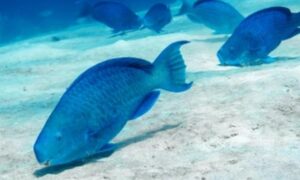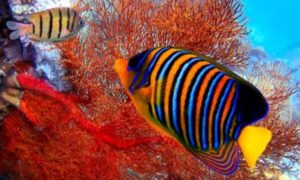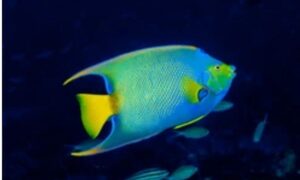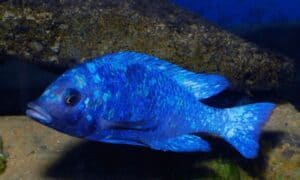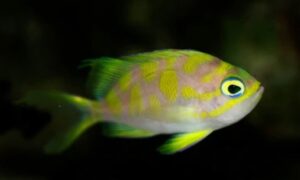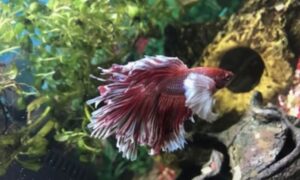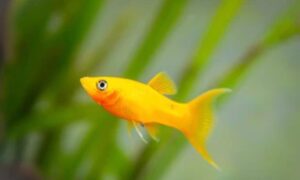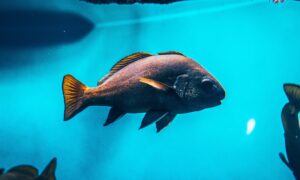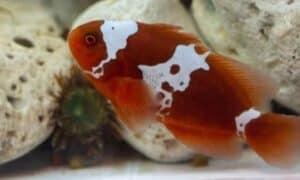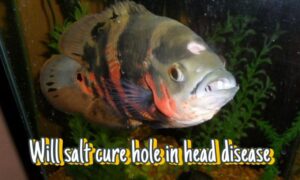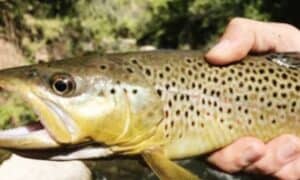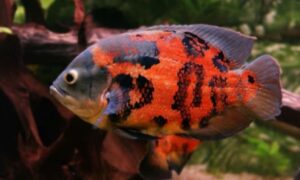Table of Contents
Purple Peacock Cichlid Overview
Purple peacock cichlid which is also known as Aulonocara Stuartgranti is from the species of haplochromine cichlid that is native to Lake Malawi and belongs to the Astatotilapia genus. They are so known as The Malawi Golden Peacock, Stuart Grant’s Golden Peacock, etc. It is one of the popular species nowadays. But they’re also known as one of the most pugnacious cichlids, and they are more likely to be taken care of as they need special care.
Purple peacock cichlid is very interesting to keep as a pet, but as mentioned above they require special care and attention if you want them to reside in your tank.
Purple peacock cichlid is also one of the popular choices to keep as a home pet amongst people who like to have fish pets. They are good to go as long as you keep their surroundings clean and give them plenty of places to hide in your aquarium.
Purple peacock cichlid comes from the bottom of the sea with sandy underlayers where it usually feeds on benthic invertebrates. Males species grow at a faster rate than females species due to the difference in metabolism between the sexes at entire developmental stages like reproduction.
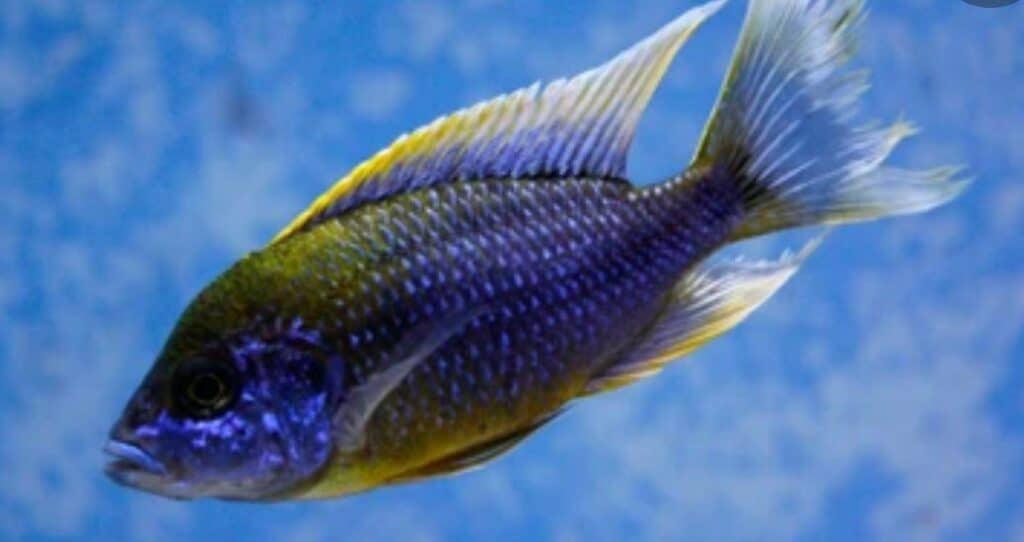
Origin of Purple Peacock Cichlid
Purple Peacock Cichlid is amongst several species of peacocks residing in Lake Malawi and is native to it. Similarly, Like all other cichlids, they are part of a large family group which is known as Labroidei that includes parrotfish, wrasses, etc
In purple peacock cichlid situation, they are members of genus Aulonocara which is generally contemplated to be among one of Africa’s most diverse fish families. There are many species that are in groups within Aulonocara, consisting of similar names like Penguin Cichlids, Cynodon Bicirrhosus, Severum Cichlids and so many more among them.
Appearance and Species Profile
Purple peacock cichlid’s appearance as the name shows this specie is recognized by its mesmerizing purple-blueish violet color and its yellow-tipped tail, which are for both males and females. Purple peacock cichlid has a range between 10 to 12 inches in length when they are in adulthood and usually has a life span between 6 to 10 years. Purple Peacock Cichlid is a huge specie that arises from Lake Malawi in Africa. It’s a truculent species that needs to be maintained conditions to survive, purple peacocks are very easy to take care of when their environmental needs are met.
Size and weight of Purple Peacock Cichlid
Purple Peacock cichlid is a specie that ranges from 8 to 20cm in length. Males species are larger than females species. Because they are in smaller size and have a non-aggressive disposition, you are able to easily keep multiple Purple Peacock cichlids in one tank.
Natural Territory
Purple peacocks cichlids originate from Lake Malawi and they feed on insects or either live fish. Usually, they are not truculent toward other fish in your home tank but they may become aggressive toward their own species as they mature. The species is indigenous to Lake Malawi and is amongst those species of cichlids that do great in freshwater aquariums.
Due to its natural environment, purple peacock cichlid favors a hard, alkaline environment with huge space to swim. They tend to be bashful when they are young, which makes it very hard to spot them in an aquarium, the best option is to keep them in large tanks. On the other hand, they tend to gather in groups around islands or rocks near the surface area.
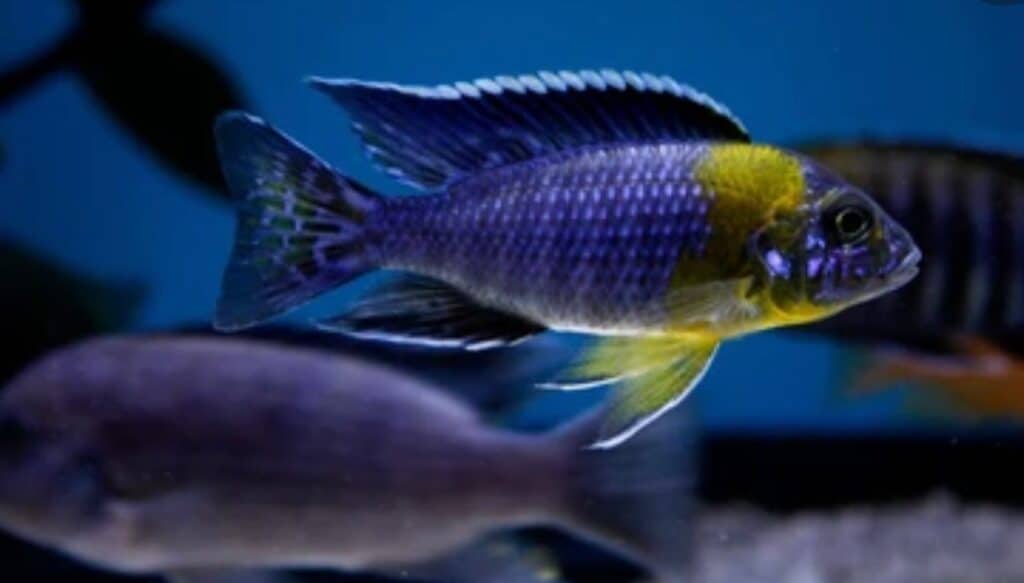
Purple Peacock Cichlids tank size and tank setup
A small group of this species can be kept in a tank that has space of 20 gallons, on the other hand, a pair will require at least 50 to breed. A bigger tank that has space of at least 75 gallons is required for a group of six or more, but usually, 100 gallons would be the best option. This is especially for males species, females species are usually obedient and don’t cause many problems in smaller aquariums.
The natural environment of cichlids tends to vary accordingly, although most of the cichlids are usually found in African rivers. For a tank, Setup fill your tank with fresh water and a clean and tidy environment with lots of rocks and plants, but it’s necessary to keep empty space in the middle so they can swim easily. If you are using rocks to create caves, then make sure they are strong so they are not able to fall over and kill your fish if they bump into those caves during swimming.
In order to maintain the quality of water you should provide some minerals and you must feed your fish aquatic invertebrates such as brine shrimps or bloodworms. These snacks are able to provide some healthy fats and proteins that will give energy to your pets. Most of the cichlids are very active swimmers and they spend their time digging through the bottom of the ground material of the tank or they spend their time hunting prey that might swim across them.
Suitable tank mates for Purple Peacock Cichlids
Purple peacocks are known as very truculent cichlid species and they should be kept with fish species that can defend their aggression. This results in making them a bad choice for many community aquariums as they do best when they are housed alone or in pairs. There are Some good tank mates for purple peacocks cichlids such as convicts, angels, jaguars, firemouths, discus, etc
Breeding process for Purple Peacock Cichlids
Purple Peacocks are one of the most tranquil fish to breed. They can be either bred as pairs or groups. The male species will establish a huge bubble nest in their area and show their colorful fins during companionship. Males species may also protect their area from other male fishes by displaying their fins and doing tail-wagging, which looks as if they are trying to break a branch off something.
Usually, purple peacock cichlids just tend to fake it because species like them do not actually have spines on their back surface. The female species choose their partner based on color and they tend to lay between a range of 30 to 100 eggs depending on their specific species onto whatever underlayer is present. After the process of fertilization, female species guard them for almost about a week before they renounce them to hatch naturally.
The children species are able to stay with their mother for a time period of three weeks until they get rid of all of their yolk sacs; in this situation, they must look after themselves. Because the female species has already released eggs once, she will stop eating while they are still young to live within her mouth cavity so that they were able to survive. After three weeks of care from their mother’s mouth, they must be fully trained enough to eat normally themselves.
Does this species tend to be aggressive or non-aggressive?
These species are truculent towards others of their own species and fishes that are not cichlids. These species are also territorial and they don’t usually favor being kept with lots of fish species, which makes it a bit problematic to mix them into an aquarium group.
The purple peacock cichlids are also known as the most peaceful in their family, but they definitely have their limits: If there is a fight for territory that breaks out between peacock cichlids, then there must be a big level of destruction.
Caring for Purple Peacock Cichlids
These species are quite easy to take care of for African cichlid that is great for new people who like to pet fishes. Due to its mesmerizing coloration and calming nature, it is meant to make a nice addition to your home tank.
They are preferred to be kept in large aquariums with a great number of open swimming rooms and hiding places. Even though they’re not aggressive toward many other species, they will chase other species around if there are too many fish in a small aquarium. Plants are also a great way of maintaining clean water and also giving the fish places to hide from larger species and having a great playtime.
As for substrate areas, gravel will work best, as long as you are able to vacuum regularly to stop clouds from forming on top due to the decomposition of food; sand is something which is not recommended because digging may cause problems with continuous fluctuating water quality that regular vacuuming is not able to address accurately. The purple peacock cichlid is a long-lived fish which means they live longer. In captivity, it can live for 10 years or even more according to the situation.
Diet of Purple Peacock Cichlids
Naturally, purple peacock cichlids are omnivores which means they like to eat both plants and animals. feed your purple peacocks a pellet food that consists of high protein content to imitate their natural diet.
They will also willingly accept frozen foods such as bloodworms, and brine shrimps as well as other live foods such as daphnia and brine shrimp nauplii which are high in protein and are good for their health.
Water conditions
The purple peacock cichlid usually prefers water conditions that are similar to Lake Malawi, with a pH level range of 8.0 to 8.4 and a temperature range of 22 to 28 degrees Celsius. A PH of almost 8.6 is tolerable but higher levels of PH will hurt your fish, especially if revealed to them for longer periods of time without elevating them up in terms of PH.
Temperatures that are below 21 or above 28 degrees should be necessarily avoided at all costs since they are able to seriously hurt your fish and may even result in the death of your fish instantly. Most of the hobbyists who like to keep these animals usually go for 25 to 26 degrees C, which are able to require additional heating equipment.
One should Always make sure to test the water before buying these fish species to avoid any mishaps in your home tanks.
Parasites and diseases that may occur
Purple peacocks are open to a huge variety of diseases that may occur in them, they include both bacterial and fungal infections such as ich and fin rot disease. They are basically sensitive to bad water quality, which may result in poor health and more chances of illness. The best way is to use a quarantine tank when you are introducing new fish, and make sure you have a good filtration setup in your aquarium.
Hunters
The most common hunters are Brown Hap, Sultan Snakehead, Major mudminnow, etc Purple Peacock cichlids are often mistaken for a Columbian sharp-tail cichlid that totally belongs to another different genus.
It must not be housed with cichlids from different genus due to its same nature of being very highly territorial etc.
Do Purple Peacock Cichlids make good pets?
Although peacocks seem challenging to take care of, they can make great pets and a good addition to your home tanks. If you like to put in great time and effort, you will be able to give them a good home tank.
To read more about visit Freshwater fishes

